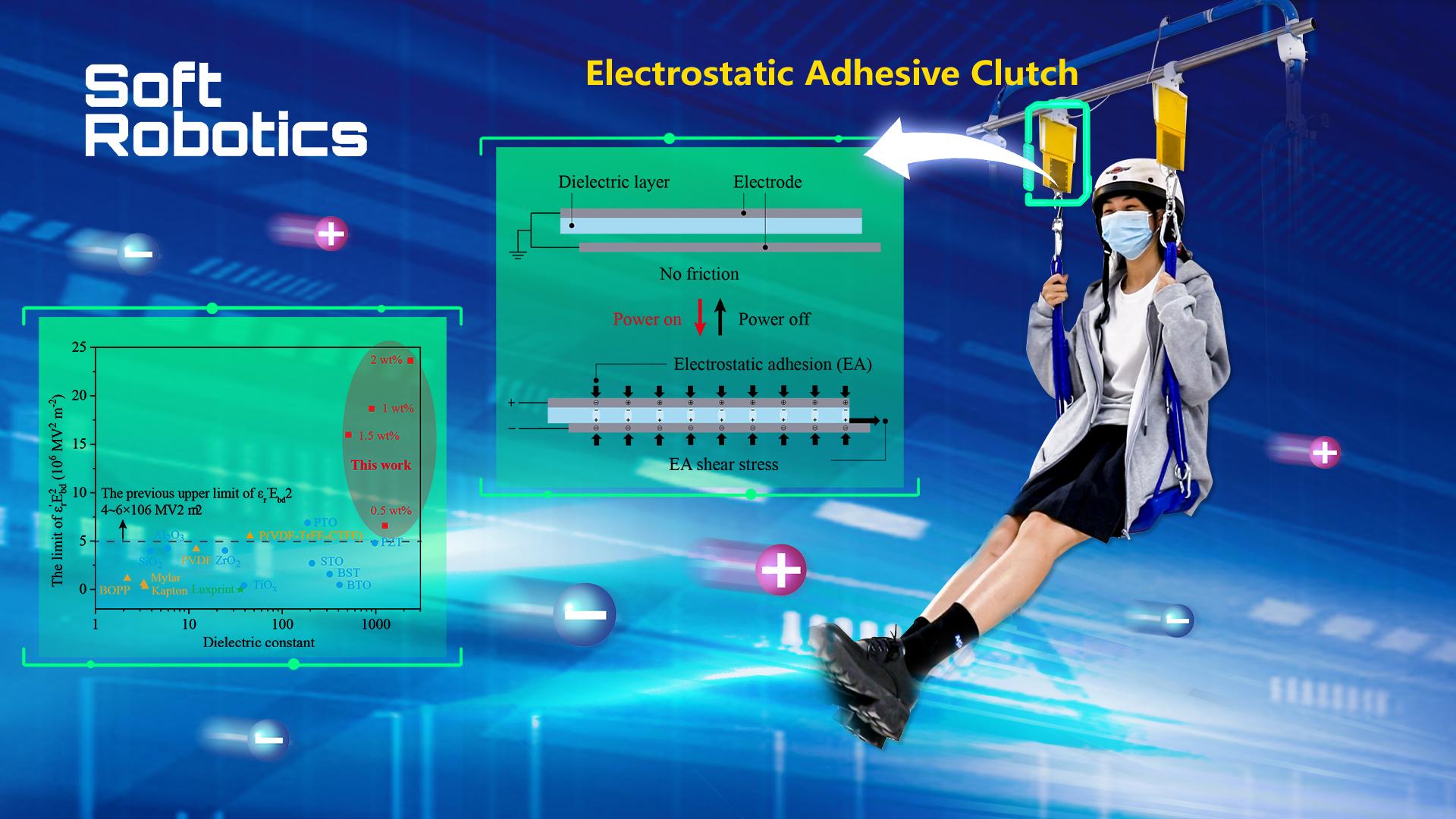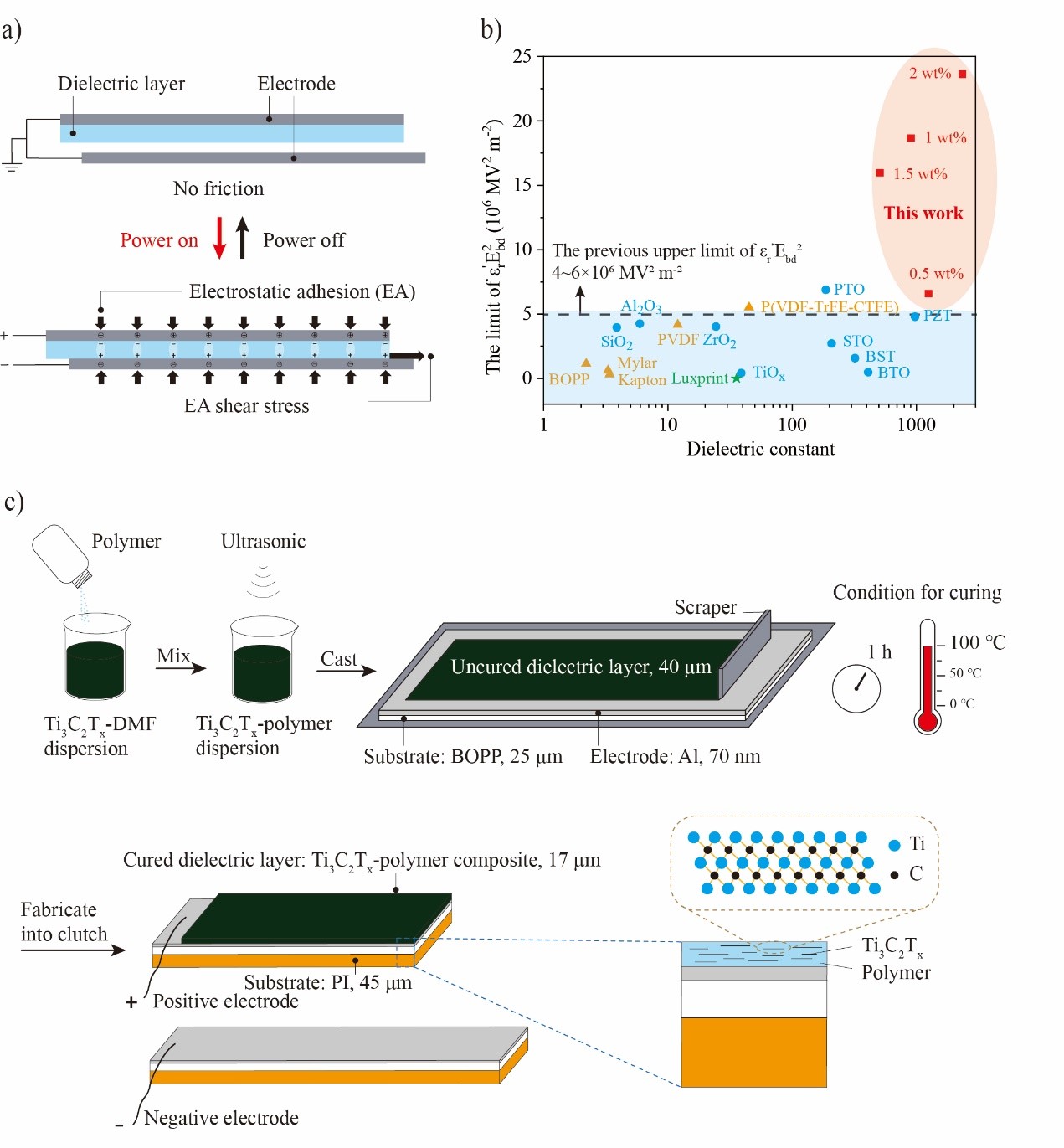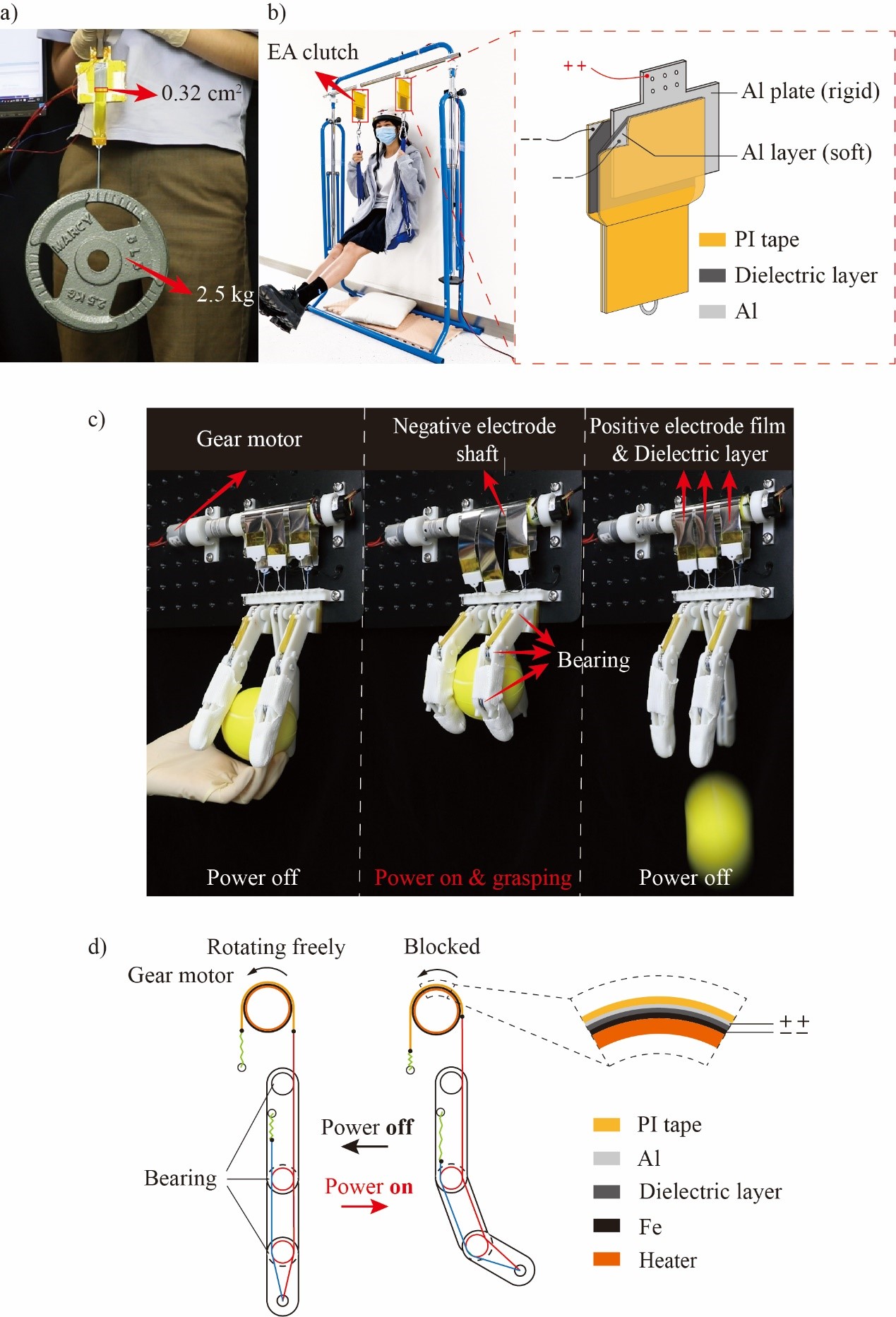Electrostatic adhesion (EA) was an emerging adhering technique based on the electrostatic field in recent decades, which could be widely used in the fields of robotics, human-machine interaction, and wearable devices. The simplest EA device consists of two electrodes and a dielectric layer between them.
The properties of the dielectric layer decide the electrostatic force, and the most crucial parameters of dielectric materials are the dielectric constant and breakdown field. Nevertheless, there is always a lower breakdown field with a higher dielectric constant. In modern-day research, the largest EA shear stress was generated (21 N cm-2) based on terpolymer P(VDF-TrFE-CTFE). For more extensive applications, higher force density is still desired, and new materials must be developed.

Associate Professor Hongqiang Wang’s research group from the Department of Mechanical and Energy Engineering and Professor Hong Wang’s research group from the Department of Materials Science and Engineering at the Southern University of Science and Technology (SUSTech) have recently published a paper about electrostatic adhesion clutch. Through composing terpolymer P(VDF-TrFE-CTFE) and two-dimensional Ti3C2Tx nanosheets (MXene), they have achieved nanocomposite films with high dielectric constant (εr′ > 2300) and low loss tangent, which significantly improves the electrostatic adhesion force.
Their study, entitled “Electrostatic Adhesion Clutch with Superhigh Force Density Achieved by MXene-P(VDF-TrFE-CTFE) Composites,” was published in Soft Robotics, a leading robotics journal publishing research on the emerging technologies and developments of soft and deformable robots.
In this work, the researchers develop superhigh EA shear stresses at relatively low voltage by compositing two-dimensional nanosheets (MXene) and terpolymer P(VDF-TrFE-CTFE), which could maximize the EA shear stress to 85.61 N cm-2, which is 408% higher than the previous maximum value (21 N cm-2). Moreover, an EA clutch pair (2 cm × 9 cm) is as thin as 160 μm, weighs only 0.4 g, and its maximum power consumption is only 59.97 mW cm-2.

Figure 1. The principle and fabrication of Electrostatic adhesion clutch
The researchers experimented with the effects of different proportions of two-dimensional materials and ternary polymers on the dielectric properties, including dielectric constant, breakdown field, and dielectric loss. The experimental results show that temperature can greatly affect the performance of dielectric materials, so this study developed a temperature-adjustable electrostatic adhesion clutch.
The clutch has a superhigh force density, which could use 0.32 cm2 of contact area to pull an object weight of 2.5 kg. Furthermore, they used the clutch to build a swing that could support a 45 kg adult, which further demonstrated the clutch’s powerful performance. Additionally, they used the clutch with a rotating metal shaft to propose a multi-fingered robotic claw that could grasp versatile objects.

Figure 2. The applications and demonstrations of Electrostatic adhesion clutch
Daiyue Wei and Quan Xiong, Research Assistants at SUSTech, are the co-first authors of this paper. Assoc. Prof. Hongqiang Wang and Prof. Hong Wang are the corresponding authors. Other authors include Jiufeng Dong, Huacen Wang, Xuanqu Liang, and Shiyu Tang, and SUSTech is the first affiliation.
This work was supported by the National Natural Science Foundation for Young Scientists of China, Natural Science Foundation of Guangdong Province, Natural Science Foundation of Liaoning Province, Science, Technology and Innovation Commission of Shenzhen Municipality, and Southern Marine Science and Engineering Guangdong Laboratory (Guangzhou).
Paper link: https://www.liebertpub.com/doi/abs/10.1089/soro.2022.0013
To read all stories about SUSTech science, subscribe to the monthly SUSTech Newsletter.
Proofread ByAdrian Cremin, Yingying XIA
Photo By